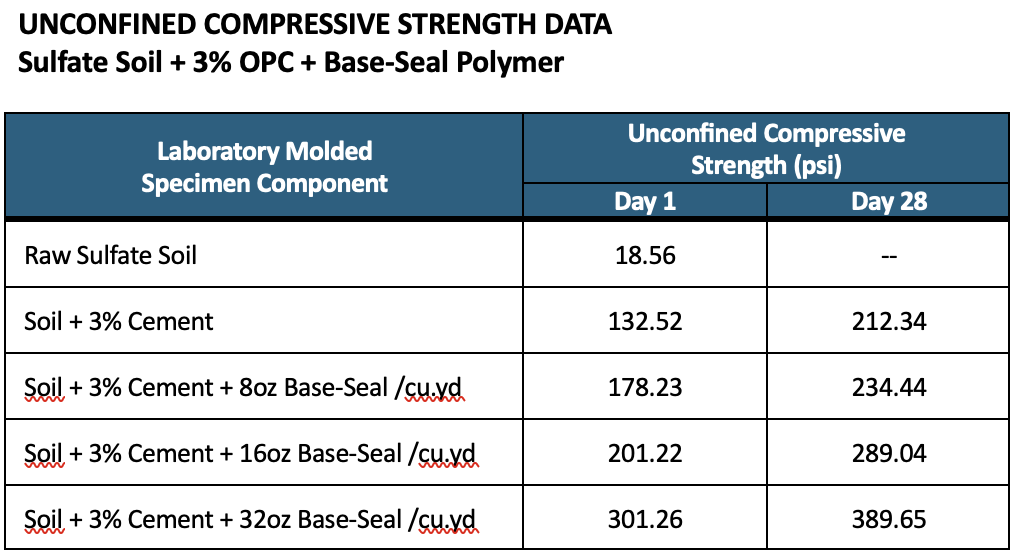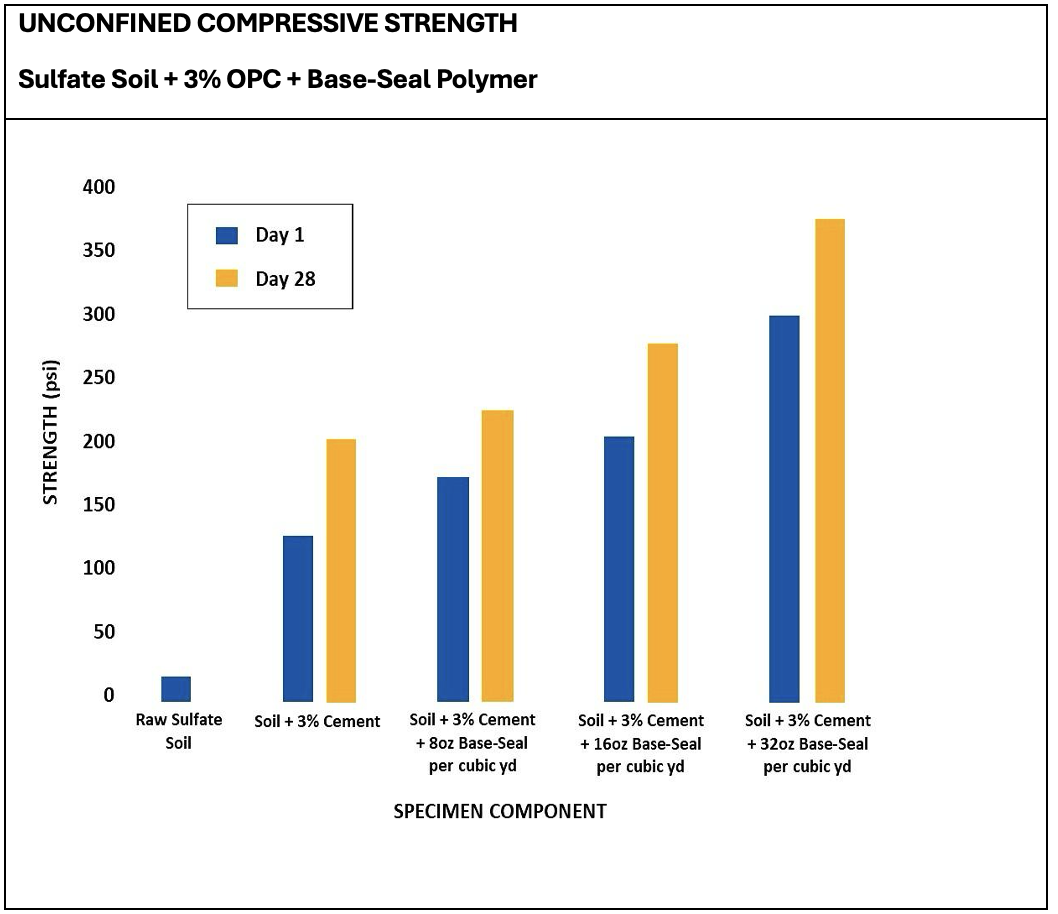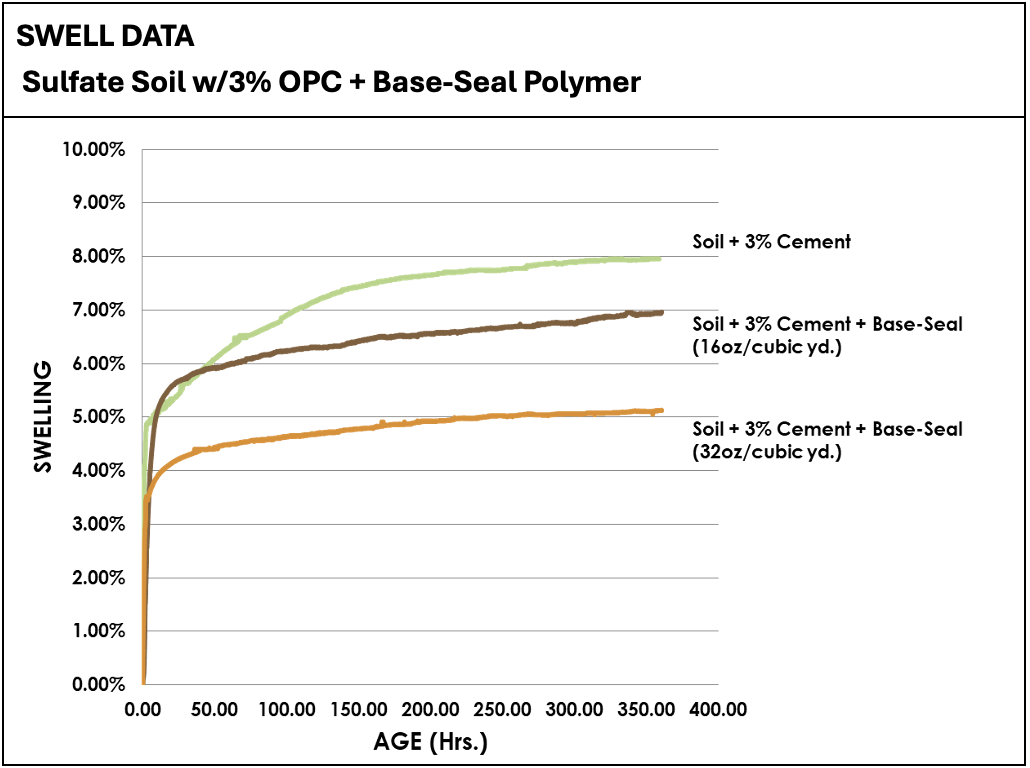Rich Rogers, P.E., the former director of Cement Council of Texas and Danny Bowers, the VP and Lead Engineer at Base-Seal® International, met with the TxDOT Odessa District officials and commissioned a study with Dr. Fred Aguayo with Texas State University to investigate the effects when high-sulfate soils are stabilized with OPC in combination with Base-Seal® polymer. Samples from the Orla Pit were provided by the Odessa Area Engineer, Frew Bogale. P.E. and the testing performed by Dr. Aguayo’s team at Texas State University. The results are promising.

Unconfined compressive strength samples were made using the raw soil, the soil + 3% cement, and the soil + 3% cement with varying amounts (8 oz, 16 oz, 32 oz) of Base-Seal® polymer. As expected, all the samples treated had a high one-day strength and all samples had increased strength as shown on the table above, with the addition of the polymer, 8 oz of polymer increasing the strength by 34%, 16 oz of polymer increasing the strength by 52%, and 32 oz of polymer increasing the strength by 127%.

After 28 days, all the samples treated had expected increased strength as well - 8 oz of polymer increasing the strength by 10%, - 16 oz of polymer increasing the strength of the cement-treated sample by 36%, and 32 oz of polymer increasing the strength by 83%.
Swell data was collected on the soil + 3% cement, as well as the soil + 3% cement with 16 oz, and 32 oz of Base-Seal® polymer. After 400 hours the sulphate soil with 3% cement had 8% swelling, the sample with 3% cement and 16 oz of polymer had 7% swelling, and the sample with 3% cement and 32 oz of polymer had 5% swelling. Base-Seal® polymer at 16 oz and 32 oz respectively reduces the swell by 1 and 3 percent. Despite the high-sulfate content of the soil, all the samples remained intact after 400 hours, over 16 days.

These findings indicate that the cement-treated soil was enhanced by the addition of a polymer soil stabilizer with both increased strength and reduced swell, leading to what may be a viable solution for getting a strong and economical subgrade where there are high sulfates in the existing soil. These promising results warrant additional study.
Conclusion
The combination of OPC and a polymer soil stabilizer not only improves strength but also reduces swell in even the most sulfate-rich soils. For engineers facing high-sulfate conditions, this treatment could mean safer, longer-lasting roads—and significant cost savings over time. Continued research and field trials will help validate and expand on these promising results. Contact us to learn how this treatment could work in your area.




